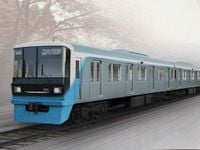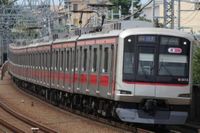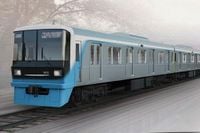On May 8, 2025, Tokyu Corporation announced a significant renewal of the exterior and interior designs of its trains that have served for approximately 20 years across three major lines: the Meguro Line, Toyoko Line, and Denen-toshi Line. This ambitious project aims to modernize the 3000 series, 5050 series (8-car formation), and 5000 series trains, enhancing both their aesthetic appeal and functionality.
The renovations are set to roll out in phases, with the Meguro Line's 3000 series scheduled to commence operations around the fall of 2025, followed by the Toyoko Line's 5050 series in the winter of the same year, and finally the Denen-toshi Line's 5000 series beginning in the spring of 2026. In total, 468 cars (54 trains) will undergo extensive updates: 104 cars from the 3000 series, 184 from the 5050 series, and 180 from the 5000 series.
According to Tokyu Corporation, the design overhaul includes both the exterior and interior of the trains, with the exception of some cars that already feature interior designs based on the 2020 series. These particular trains will only receive exterior updates. The decision on the new exterior design was made through an internal competition, which garnered 86 proposals from employees, with 41 entries for the Meguro Line's 3000 series and 45 for the Denen-toshi Line's 5000 series. The design was finalized under the supervision of Tanseisha Co., Ltd., the company responsible for the 2020 series train designs.
The new exterior design will be based on the concept color "INCUBATION WHITE," symbolizing a transition into a beautiful era. This design aims to evoke a friendly and approachable atmosphere, featuring a front that gives the impression of a smiling train, intended to bring joy to passengers at stations and along the tracks. The lower part of the front and the sides will incorporate gradient lines that reflect the colors of the respective train lines, symbolizing harmony, diversity, novelty, and beauty.
Internally, the trains will feature a calming color scheme inspired by the scenery along the Tokyu Line, creating a sense of familiarity and comfort. The renovation will also increase free space within the trains, making them more accessible and user-friendly for all passengers, including those with strollers or mobility aids.
As part of the renovation overview, the breakdown of renovated cars includes: 104 cars from the Meguro Line's 3000 series (8 cars x 13 trains), 184 cars from the Toyoko Line's 5050 series (8 cars x 23 trains), and 180 cars from the Denen-toshi Line's 5000 series (10 cars x 18 trains). Some cars that already use interior designs based on the 2020 series will only have their exteriors updated.
While the 3000 series, 5050 series, and 5000 series are set for renewal, the 5080 series operating on the Meguro Line will not be included in this renovation phase. A spokesperson from Tokyu Corporation clarified that the renovation will prioritize the older 3000 series first, leaving the 5080 series for future consideration. Additionally, two newer trains from the 5050 series, manufactured after 2016 and aligned with the 2020 series design, will also be excluded from the current renovation efforts.
The renovations are not just about aesthetics; they reflect Tokyu Corporation's commitment to improving passenger experience and accessibility. By modernizing these trains, the company aims to provide a more comfortable and enjoyable travel environment for all users.
With the phased approach to the renovations, the first of the upgraded trains will be in service by fall 2025, followed by winter and spring launches for the Toyoko and Denen-toshi lines, respectively. This timeline ensures that passengers will soon experience the benefits of the significant investment in train upgrades.
In summary, the renewal of the Tokyu trains marks an important step in enhancing public transportation in the region. It not only modernizes the fleet but also aligns with contemporary design trends and passenger needs, setting a standard for future developments in the rail industry.



